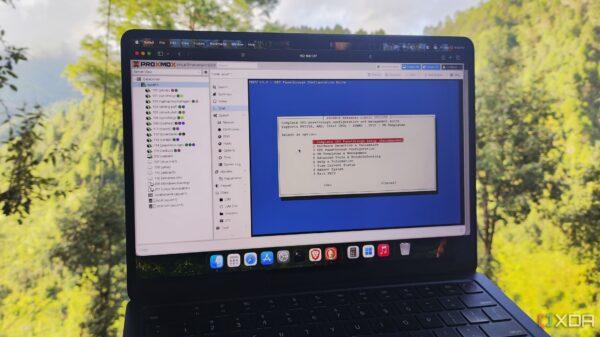Stocks on Wall Street experienced a decline on Friday, setting the stage for their first weekly loss in four weeks. The S&P 500 fell by 0.8% during afternoon trading. The Dow Jones Industrial Average decreased by 234 points, equivalent to 0.5%, while the Nasdaq composite dropped 1.4%.
The technology sector particularly weighed down the market, with significant declines in high-profile companies known for their substantial market influence. Notably, Nvidia saw its shares drop by 2.2%, while Broadcom experienced a steeper decline of 4.2%. Despite more gainers than losers overall in the S&P 500, the poor performance of these tech giants contributed to the broader market downturn.
Investors remained focused on the latest quarterly earnings reports from U.S. companies, with mixed results influencing market dynamics. For instance, Block, the parent company of Square and Cash App, saw its stock plummet by 8.4% after reporting earnings that did not meet analyst expectations. Conversely, Peloton experienced a surge of 7.7% after surpassing projections, and Expedia Group soared by 17.3% following its impressive earnings report.
Economic Concerns Amid Data Shortages
As of now, over 90% of the companies within the S&P 500 have reported their earnings for the latest quarter. Most have shown growth beyond Wall Street’s expectations, particularly within the influential tech sector, as noted by data from FactSet. However, corporate profits and forecasts are under scrutiny as investors attempt to assess whether the market’s elevated valuations are justified.
The situation has been exacerbated by the ongoing U.S. government shutdown, which is currently the longest on record, leading to the absence of key economic data. This shutdown has resulted in the unavailability of important reports, including the October employment data, which adds to concerns about a weakening job market.
The latest consumer sentiment report from the University of Michigan indicated a sharp decline in consumer confidence, reaching a three-year low. This downturn was unexpected, as economists had anticipated a slight increase. According to Eugenio Aleman, chief economist for Raymond James, “Consumers are starting to get concerned about the potential effects of the government’s shutdown on economic activity.”
Inflation and Interest Rate Outlook
The report also revealed a slight uptick in inflation expectations, a critical issue as inflation remains stubbornly high. The lack of reliable data on consumer prices and other inflation measures complicates the Federal Reserve’s ability to respond effectively. The Fed has indicated a cautious approach regarding future interest rate cuts, which have been a significant factor in Wall Street’s substantial gains this year.
The central bank has already cut its benchmark interest rate twice in 2023 in response to potential economic growth challenges stemming from a softening job market. While cutting rates can stimulate the economy by reducing borrowing costs, it also risks exacerbating inflation, which is currently above the Fed’s 2% target.
Market expectations suggest that Wall Street is largely betting on another interest rate cut during the Fed’s December meeting, with a 70% probability forecasted, according to CME FedWatch.
In the bond market, Treasury yields reflected this uncertainty, with the yield on the 10-year Treasury falling to 4.07% from 4.09% late Thursday, and the yield on the two-year Treasury dropping to 3.54% from 3.56%.
Internationally, markets in Europe also experienced declines, while Asian markets closed lower. In a development concerning trade, China reported a 1.1% contraction in exports for October, with shipments to the United States dropping by 25% compared to the previous year. However, economists remain hopeful for a recovery in Chinese exports following recent discussions between U.S. President Donald Trump and Chinese leader Xi Jinping aimed at de-escalating the trade war between the two nations.
The current landscape reflects a complex interplay of corporate performance, economic data shortages, and inflation pressures, all of which will continue to shape investor sentiment and market movements in the weeks ahead.








































































